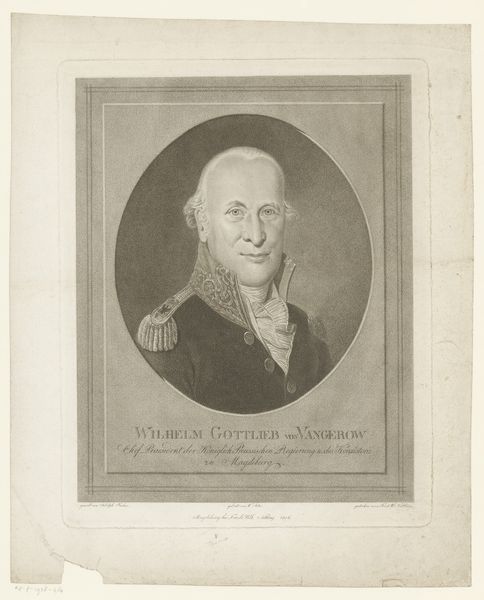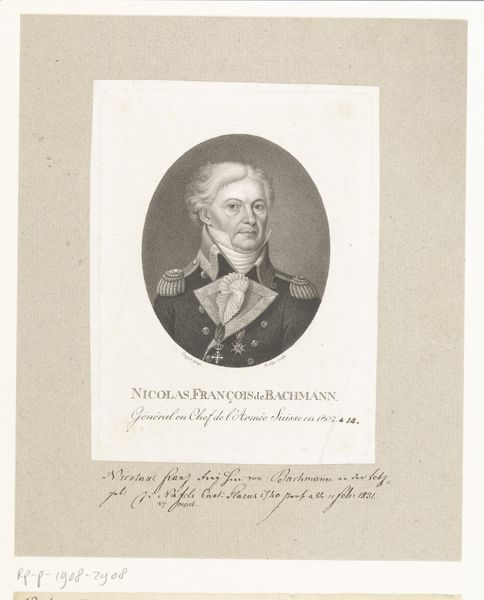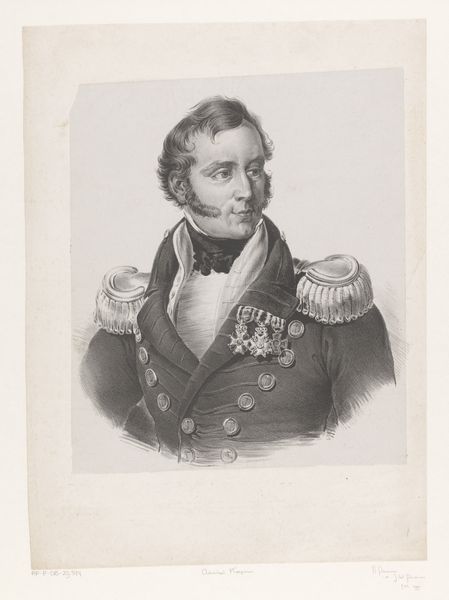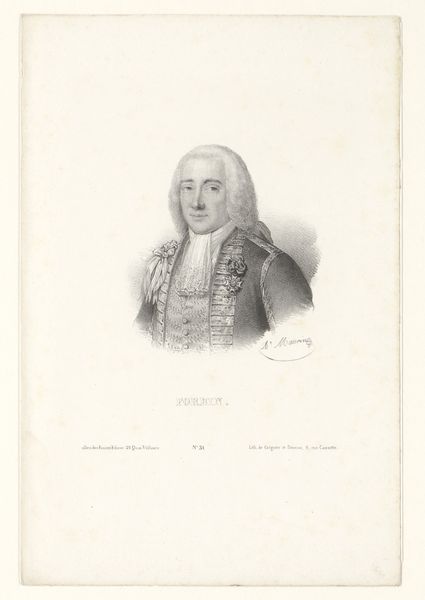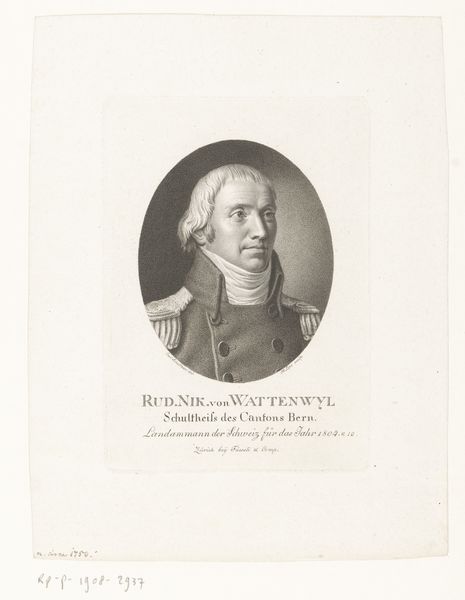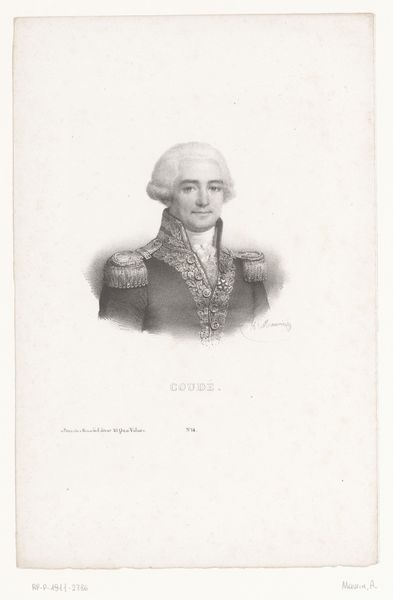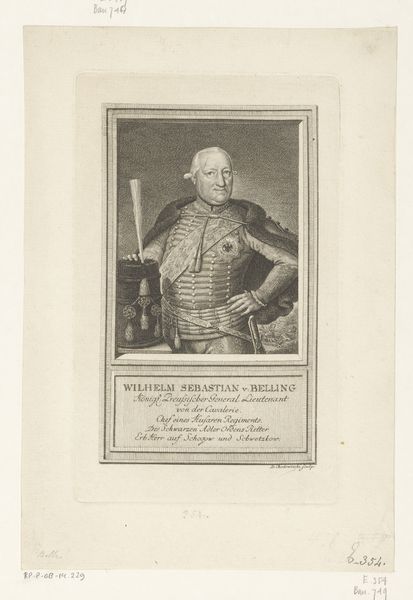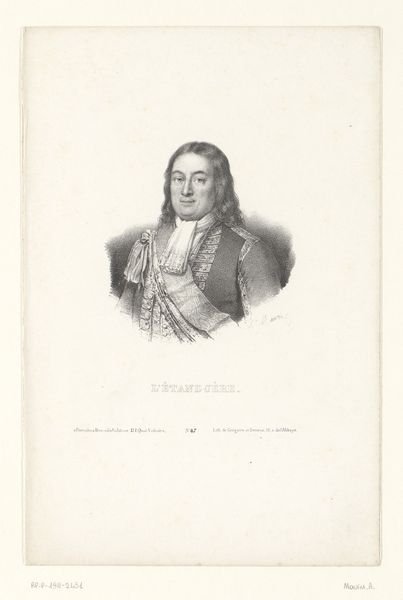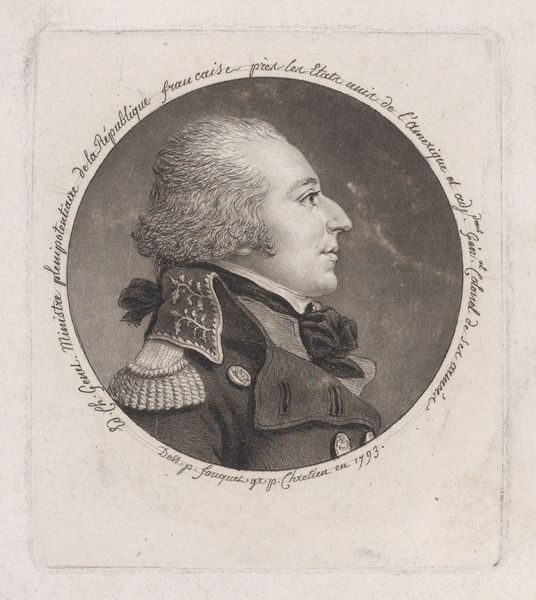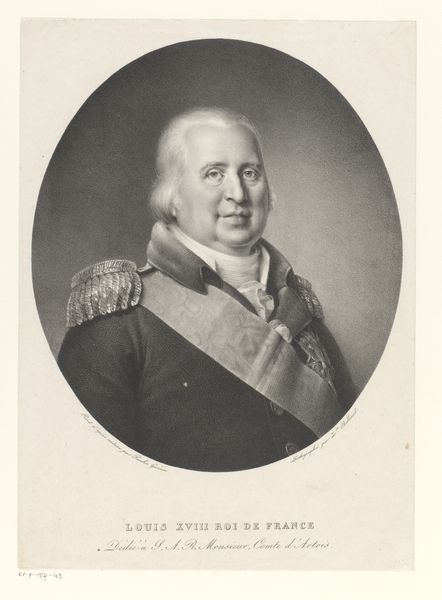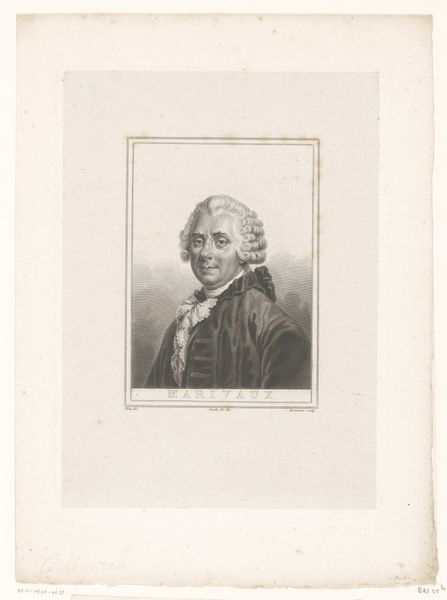
engraving
#
portrait
#
neoclacissism
#
old engraving style
#
history-painting
#
engraving
Dimensions: height 265 mm, width 189 mm
Copyright: Rijks Museum: Open Domain
This portrait of Louis XVIII of France, was created by J.L. (II) Benoist using engraving, a printmaking process that demands precision and control. Engraving begins with a metal plate, traditionally copper. The artist uses a tool called a burin to carve lines directly into the plate. These incised lines hold ink, and when the plate is pressed against paper, the image is transferred. Notice the fineness of the lines here, and the way they build up to create areas of tone and shadow. This wasn't a quick process, but a labor-intensive one, requiring hours of skilled work. The choice of engraving speaks to the social context of the time, where printmaking played a crucial role in disseminating images and ideas. Think of this portrait not just as an artwork, but as a piece of political communication, carefully crafted and reproduced for a wide audience. The very act of engraving, with its emphasis on reproduction, suggests the growing power of mass media and its ability to shape public perception. It reminds us that art is not just about individual expression, but is deeply intertwined with the social and political forces of its time.
Comments
No comments
Be the first to comment and join the conversation on the ultimate creative platform.

